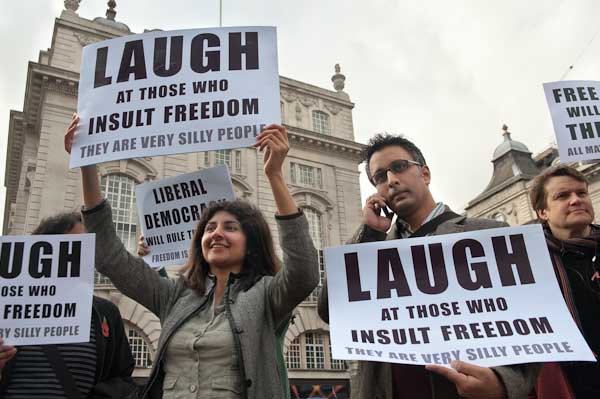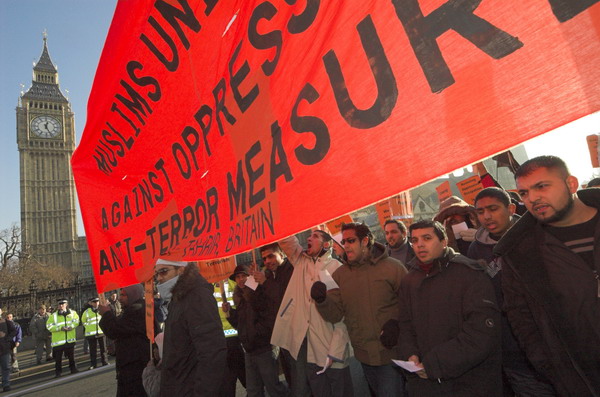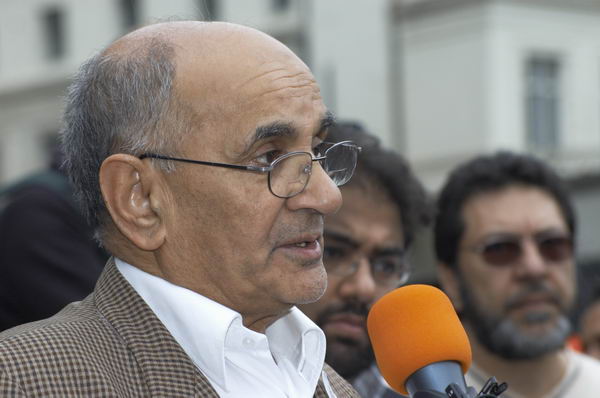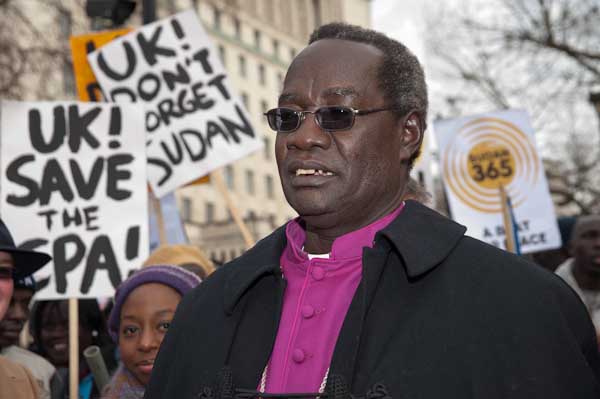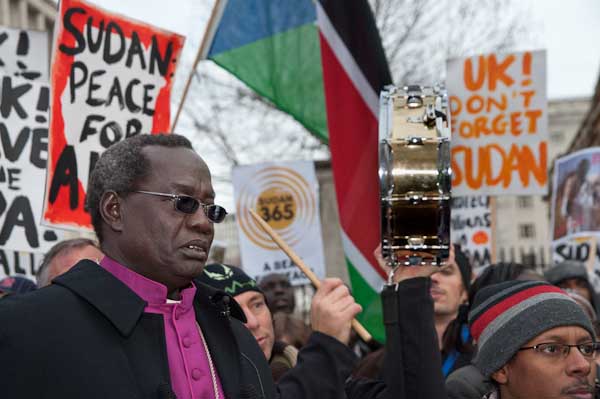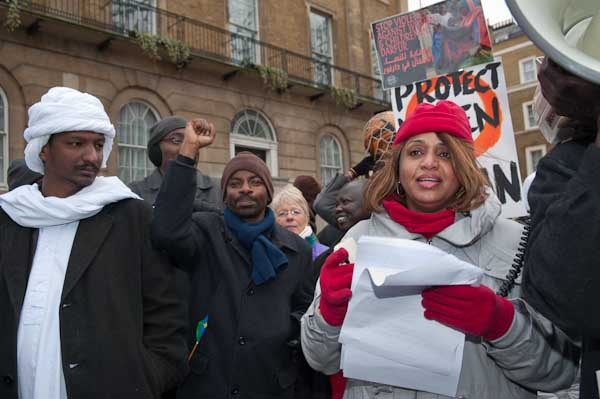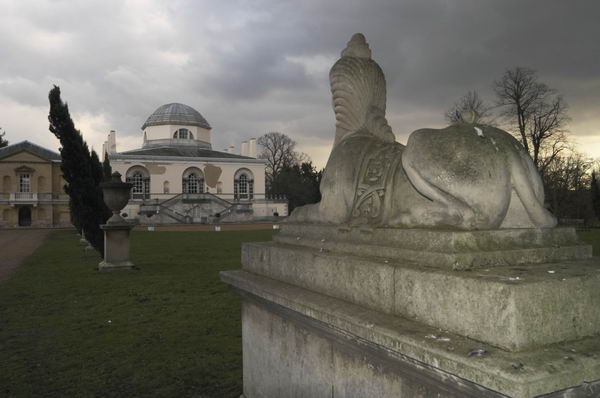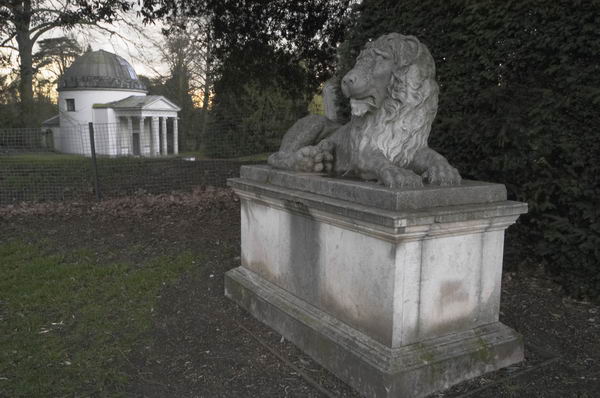Yesterday, 11 January 2010, was 8 years since the USA set up the prison camp at Guantánamo Bay, although some of the prisoners have been held longer in various black holes around the world either by the US or on their behalf by others. The choice of the site showed a disregard for international law, and the treatment of the detainees flouted the international conventions. You can read more about Guantánamo on Andy Worthington‘s site and book.
I’ve already posted pictures and text about the event on Demotix (where it made the front page), Indymedia and of course with more pictures on My London Diary so I don’t need to recount the details here. This was the picture that Demotix put on the front page:
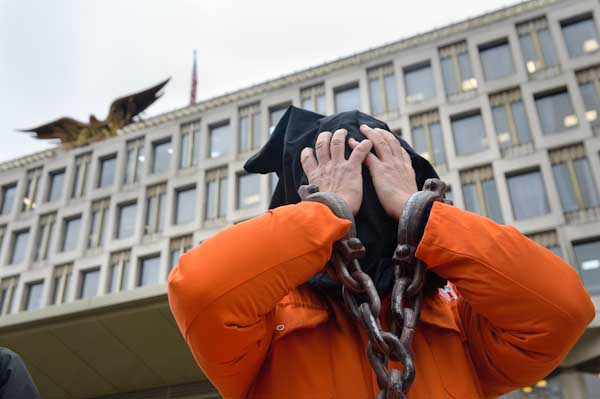
Visually, the eagle is the obvious thing to include in the picture (and it would have been nice to have more of the flag too, but the lack of wind wasn’t really cooperating.) Obviously a symbol of USAmerica – why they put it there. But also a symbol of power and of freedom, the freedom to soar like an eagle, which the detainees don’t have. Instead of being free to spread their wings, their arms are manacled, and hands drawn back in, onto the hooded face. I liked the symmetry of the pose and I think I got the cropping just under the arms – and rather fortunately of the chain – just about right.
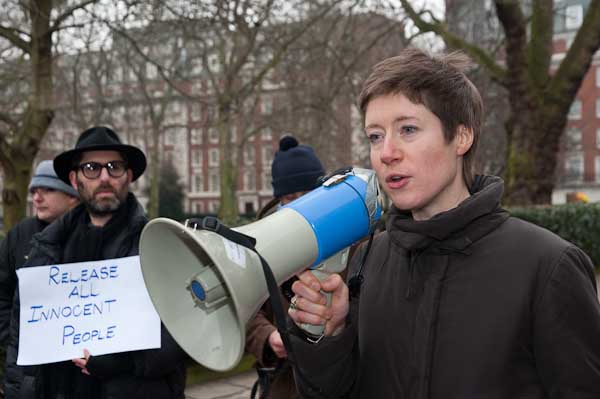
Another image I liked was of one of the speakers, Chloe Davies of Reprieve, which has provided legal defence for many of the detainees, over 50 of their clients have already been released- although over 30 are still held. I saw I could more or less line up the end of the megaphone she was holding with an appropriate message held by another of the protesters, “Release all innocent people” and it was almost as if this message was emerging from the megaphone.
I had to work very quickly, and wasn’t helped when I was trying to get in the exact right position when another person with a camera came and stood in front of me. So it could have been improved a little.
Most of these pictures were taken with the Sigma f2.8 24-70mm which continues to impress me both with its performance and its weight! But I also took a few mainly portraits with the older lightweight 55-200mm DX format Sigma. Apart from just a little vignetting at the wider end (cropped in some images) it really does a grand job. I’m not sure Joy Hurcombe will thank me (or Sigma) for this, but the full size original is really biting sharp and detailed, with not the slightest hint of camera shake despite being taken at 1/100s at 200mm focal length.
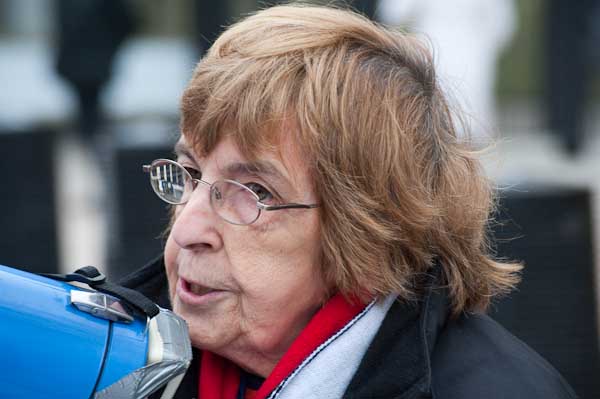
Some Tech stuff
Taking the pictures wasn’t a great problem, other than that while the guys in the orange jump suits were posing there was a bit of a scrum of press and others. And it was one of the dullest days you can imagine, though that was hardly a problem – I simply set the base ISO to 800 and the minimum shutter speed to 1/100th using auto-ISO on the D700. I had the camera on aperture priority at f8 and the I’d chosen ISO 2000 as the maximum ISO. So nearly all the non-flash pictures were taken at 1/100th at f8, though there we just a couple where even ISO 2000 wasn’t quite enough and they were exposed at 1/80.
Adding the SB800 flash appears to peg the ISO at the lower setting of the auto-iso limits m- in my case ISO800, while in aperture priority mode you of course set the aperture (and I left this at f8 the.). In aperture priority (or program mode) the slowest allowed shutter speed is set by custom function e1 – and I had that set to its fastest possible value, 1/60s (a shame it doesn’t let you set 1/125.) It was used for almost all the flash pictures, with just one or two having sufficient light to use a faster speed.
In fact the easiest way to use the flash is to work in manual mode, where you set both aperture and shutter speed, but if you want to switch rapidly from working with and without flash you then need to alter the manual settings or switch to another exposure mode as you switch the flash off – and it’s all too easy to forget.
One very simple mistake – which I made to start with but immediately noticed – is not to slide the flash quite all the way into the flash shoe. You can do this and still manage to turn the lock, and the flash will still fire, but I think on full power, usually resulting in severe overexposure.
Nikon doesn’t actually give much information about how the accessory flash units actually work with the camera in either the camera or flash manuals. But usually it just does work.
Actually the picture above was underexposed. I’d thought that the matrix metering would compensate for the largish area of sky, but it didn’t. Added to the -2/3 stop of exposure compensation I’d dialled in on an earlier shot to avoid clipping highlights, it was really a little too far under for comfort, but a little tweaking in Lightroom restored it to reasonable health.
Bright orange jumpsuits are a bit of a challenge, and Adobe’s standard camera profile doesn’t handle them well. I made my job much easier by using the “untwisted” profiles I wrote about a couple of months ago.



